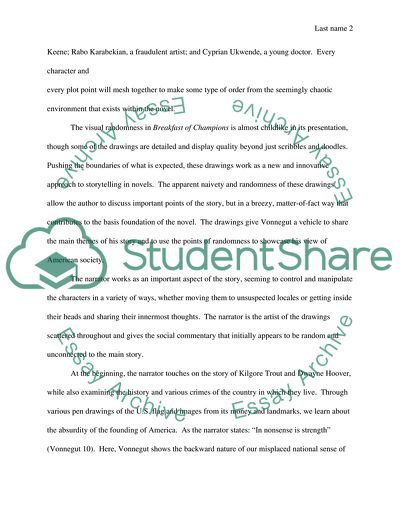Cite this document
(Kurt Vonnegut's Breakfast of Champions Book Report/Review Example | Topics and Well Written Essays - 1500 words, n.d.)
Kurt Vonnegut's Breakfast of Champions Book Report/Review Example | Topics and Well Written Essays - 1500 words. https://studentshare.org/literature/1746519-breakfast-of-champions
Kurt Vonnegut's Breakfast of Champions Book Report/Review Example | Topics and Well Written Essays - 1500 words. https://studentshare.org/literature/1746519-breakfast-of-champions
(Kurt Vonnegut'S Breakfast of Champions Book Report/Review Example | Topics and Well Written Essays - 1500 Words)
Kurt Vonnegut'S Breakfast of Champions Book Report/Review Example | Topics and Well Written Essays - 1500 Words. https://studentshare.org/literature/1746519-breakfast-of-champions.
Kurt Vonnegut'S Breakfast of Champions Book Report/Review Example | Topics and Well Written Essays - 1500 Words. https://studentshare.org/literature/1746519-breakfast-of-champions.
“Kurt Vonnegut'S Breakfast of Champions Book Report/Review Example | Topics and Well Written Essays - 1500 Words”. https://studentshare.org/literature/1746519-breakfast-of-champions.


